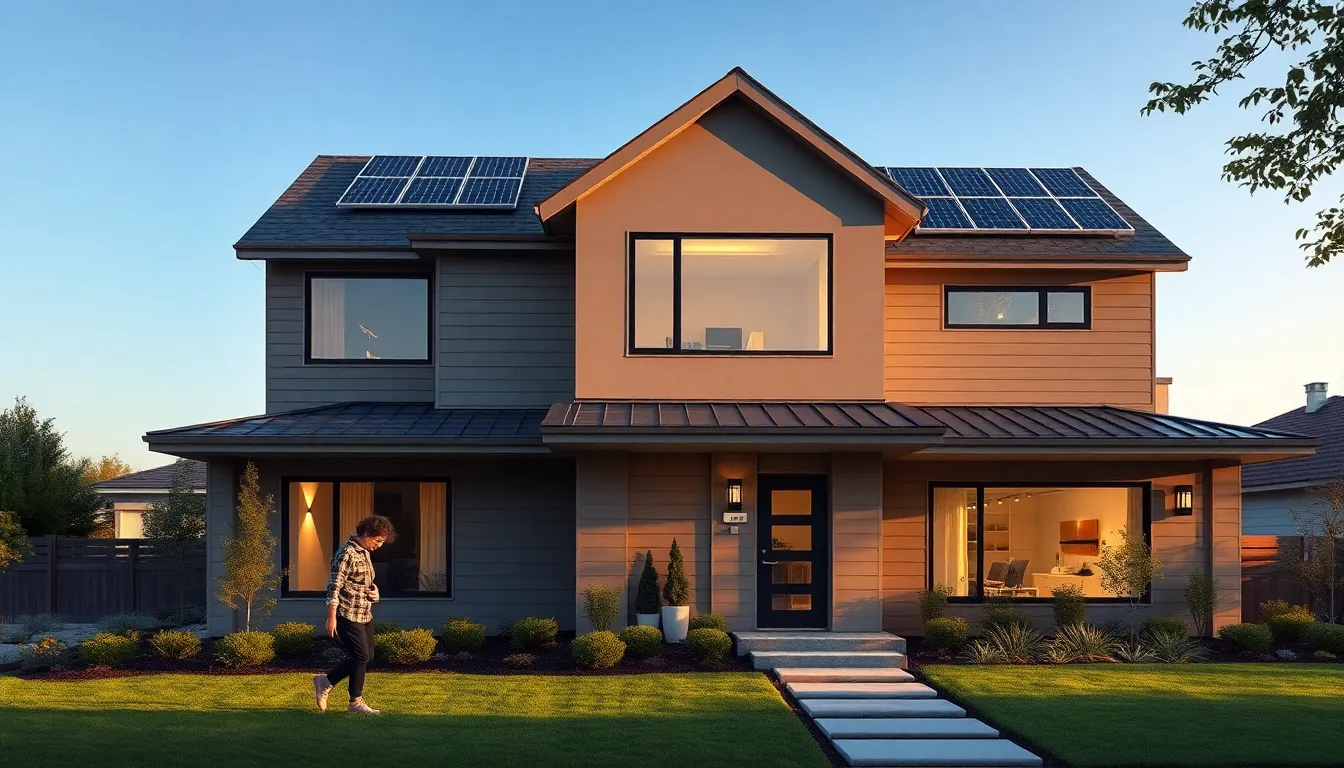Imagine walking into your home and having the lights adjust to your mood without lifting a finger. Sounds like magic, right? Well, welcome to the world of home lighting control, where technology meets comfort in the most delightful way. Gone are the days of fumbling for switches like a toddler in a dark room. Now, with a simple voice command or a tap on your smartphone, you can create the perfect ambiance for any occasion—whether it’s a cozy movie night or a vibrant dinner party.
Table of Contents
ToggleOverview of Home Lighting Control
Home lighting control integrates advanced technology to elevate comfort and convenience. Users can effortlessly manage lighting settings using voice commands or smartphone apps. These features replace traditional switches, streamlining the experience of adjusting lights throughout a residence.
Energy efficiency stands out as a significant advantage. Smart lighting systems can automatically adjust brightness based on natural light levels, reducing electricity consumption. Such systems often include LED technology, which uses up to 75% less energy than incandescent bulbs.
Customization is another key aspect of home lighting control. Users can create specific lighting scenes for activities, enhancing the atmosphere during movie nights or dinner parties. Different settings cater to various moods, allowing for immediate transitions between bright and dim lighting.
Remote access adds further convenience. Homeowners can control lights from anywhere, whether they’re at work or on vacation. This capability increases security by enabling them to simulate occupancy through scheduled lighting changes.
Integration with other smart home devices amplifies the benefits. Lighting control can synchronize with heating or cooling systems, optimizing energy use further. Additionally, compatibility with security cameras and alarms strengthens overall home safety.
Ultimately, home lighting control transforms how individuals experience their living spaces. By offering versatile, efficient, and user-friendly options, this technology significantly improves daily life.
Benefits of Home Lighting Control

Home lighting control systems provide numerous advantages that enhance everyday living. These systems improve energy efficiency, convenience, and security.
Energy Efficiency
Smart lighting systems adjust brightness automatically based on natural light. This feature significantly lowers electricity consumption. LED technology, which can use up to 75% less energy than incandescent bulbs, plays a crucial role. Users achieve energy savings while maintaining optimal lighting. Enhancing efficiency not only reduces utility bills but also contributes to environmental sustainability.
Enhanced Convenience
Controlling lights via smartphones or voice commands simplifies everyday tasks. Homeowners can create custom lighting scenes tailored to different activities. Adjusting lights from anywhere increases flexibility, making it easier to manage various situations. Scheduling lights to turn on and off simulates presence, which helps with routine activities. Such convenience transforms routine interactions with home lighting.
Improved Security
Lighting control systems enhance home security by enabling scheduled lighting changes. Simulating occupancy through timed lights deters potential intruders. Real-time control allows users to respond to emergencies, ensuring safety. This immediate access increases peace of mind, whether at home or away. Improved security functions make homes safer and more secure for families.
Types of Home Lighting Control Systems
Home lighting control systems come in various forms, allowing users to adjust their environments based on individual needs. Understanding the different types helps in selecting the best system for a home.
Smart Lighting
Smart lighting systems utilize advanced technology to offer convenience and energy savings. These systems connect to Wi-Fi, enabling control through smartphone apps or voice commands. Users can adjust brightness and color temperature to suit different moods or activities. Integration with smart home ecosystems enhances functionality, allowing for automated schedules and scene settings. Brightness can even adapt to natural daylight, optimizing energy use further. Such flexibility promotes efficiency, as homes equipped with smart lighting can reduce electricity consumption significantly.
Manual Control Systems
Manual control systems rely on traditional methods for lighting management. These usually involve wall switches and dimmers for adjusting light levels. While they provide basic functionality, homeowners miss out on the advanced features of modern smart systems. Such systems may include multi-way switches allowing control from multiple locations. Installation typically remains simple, requiring no extensive wiring or configuration. However, users sacrifice the benefits of remote access and automation, limiting their ability to customize lighting efficiently. Manual systems often serve as cost-effective solutions for individuals preferring simplicity in their lighting setups.
Popular Home Lighting Control Technologies
Home lighting control technologies have evolved, providing homeowners with various options to enhance their spaces. These systems improve efficiency, convenience, and ambiance.
Wireless Systems
Wireless systems use Wi-Fi or Bluetooth technology to connect lighting fixtures to control devices. Smart bulbs exemplify this technology, allowing homeowners to control brightness and color through smartphones or voice commands. Setup often requires minimal installation, offering flexibility in placement. Integration with smart home ecosystems enhances functionality, enabling automation of lighting schedules. Popular platforms include Philips Hue and LIFX, known for their versatility in lighting options and ease of use. These systems also contribute to energy savings by utilizing energy-efficient LEDs.
Wired Systems
Wired systems provide a stable and reliable network for controlling lighting. These setups often involve installing smart switches that connect directly to the home’s electrical system. Users benefit from a seamless experience, eliminating concerns about connectivity issues seen in wireless systems. Wired systems typically support advanced features such as customizable scenes and dimming capabilities. Additionally, these installations can enhance a home’s overall value due to their robustness. Many builders and homeowners prefer wired solutions for new constructions because of their longevity and reliability.
Installation Considerations
Lighting control systems require careful consideration during installation. Homeowners can choose between professional installation or take a DIY approach based on their expertise and preference.
Professional Installation vs. DIY
Professional installation ensures optimal performance and configuration of lighting systems. Expertise in wiring and technology streamlines the setup process. Many homeowners opt for professionals when integrating complex systems with existing electrical infrastructure. For those with limited experience, a professional can help avoid potential issues. DIY installations offer lower initial costs but can lead to complications without proper knowledge. Achieving the best results often relies on understanding the specific requirements of the chosen system.
Cost Factors
Cost factors significantly influence the decision-making process for lighting control systems. Initial expenses vary based on system type, features, and installation choices. Smart lighting systems typically involve higher upfront costs due to advanced technology. DIY installations may reduce immediate costs, but potential future repairs could increase overall expenses. Long-term savings from energy-efficient solutions can offset upfront investment. Homeowners consider their budget alongside the need for enhanced functionality and convenience when selecting a system.
Home lighting control systems are revolutionizing the way individuals interact with their living spaces. By embracing smart technology homeowners can effortlessly enhance comfort and security while promoting energy efficiency. Customization and remote access transform routine lighting tasks into seamless experiences tailored to personal preferences.
Investing in these systems not only elevates the ambiance of a home but also contributes to long-term savings and environmental sustainability. Whether opting for wireless or wired solutions the benefits of smart lighting are clear. As technology continues to evolve homeowners have the opportunity to create truly dynamic environments that align with their lifestyles and values.



